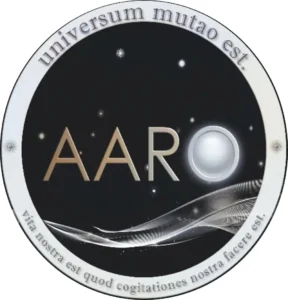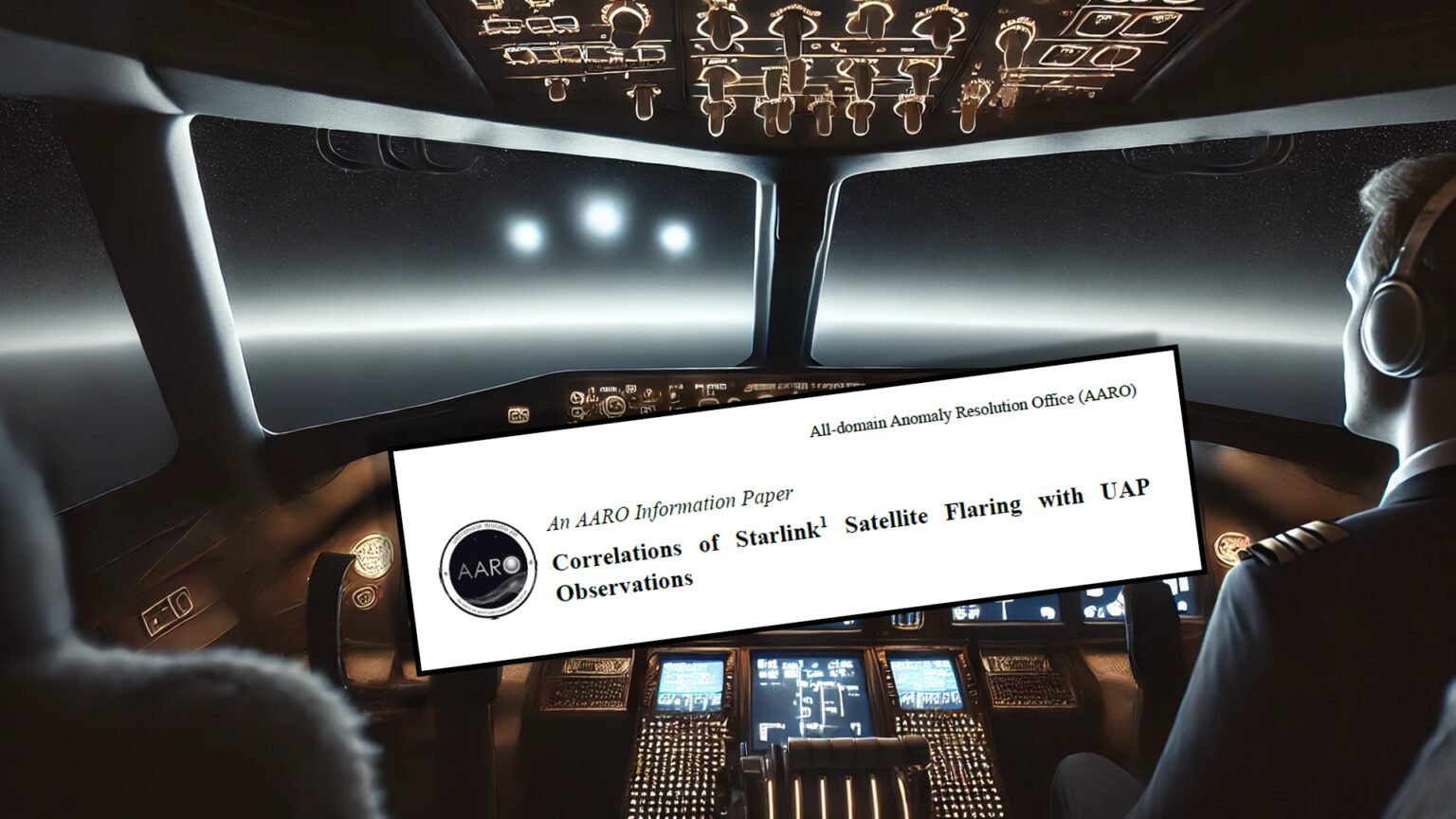 The All-domain Anomaly Resolution Office (AARO) has released a report titled Correlations of Starlink Satellite Flaring with UAP Observations and an accompanying video explaining the “Satellite Flaring Phenomenon.” These materials aim to address how optical effects caused by satellites, particularly those in large constellations such as SpaceX’s Starlink, can lead to misinterpretations of unidentified anomalous phenomena (UAP).
The All-domain Anomaly Resolution Office (AARO) has released a report titled Correlations of Starlink Satellite Flaring with UAP Observations and an accompanying video explaining the “Satellite Flaring Phenomenon.” These materials aim to address how optical effects caused by satellites, particularly those in large constellations such as SpaceX’s Starlink, can lead to misinterpretations of unidentified anomalous phenomena (UAP).
The report outlines how sunlight reflecting off a satellite’s surfaces—such as antennas or solar panels—can create bright flashes of light visible from the ground. These reflections are categorized as either diffuse or specular. Diffuse reflection occurs when sunlight scatters off rough surfaces, producing a dimmer but more prolonged glow. Specular reflection, on the other hand, involves light bouncing off smooth, mirror-like surfaces, creating intense but short-lived flares often referred to as “glints.”
Starlink satellites, with their unique design, are particularly prone to creating both types of reflections. The report notes that their solar panels and bus components can generate phenomena that resemble stars moving across the sky or, in some cases, more complex shapes such as triangles or spinning lights. AARO emphasized that the growing number of satellites in Low Earth Orbit (LEO)—currently over 6,700 Starlink satellites alone—has significantly increased the frequency of such observations. With thousands more satellites planned for deployment by various companies, including Amazon and Eutelsat, this trend is expected to continue.
 The document highlights how these flaring phenomena can account for many UAP sightings, particularly those involving multiple lights or geometric formations. For example, the report examined a 2022 Federal Aviation Administration (FAA) UAP report in which an airline pilot described multiple lights moving in different directions near a constellation. AARO’s analysis attributed the sighting to Starlink satellite flares.
The document highlights how these flaring phenomena can account for many UAP sightings, particularly those involving multiple lights or geometric formations. For example, the report examined a 2022 Federal Aviation Administration (FAA) UAP report in which an airline pilot described multiple lights moving in different directions near a constellation. AARO’s analysis attributed the sighting to Starlink satellite flares.
To aid observers, the report provides guidelines for predicting satellite flares, including using online tools to calculate flare visibility based on the Sun’s position and satellite trajectories. This information is designed to help differentiate satellite-related phenomena from other potential sources of UAP.
The analysis also extends to airborne sightings, as pilots often report UAPs that can be linked to satellite flares. Aircraft altitude and speed allow for extended visibility of these phenomena compared to observations from the ground. AARO highlighted that understanding these dynamics is crucial for accurately identifying airborne phenomena.
To supplement the report, AARO released a video titled The Satellite Flaring Phenomenon. The animated presentation visually explains how sunlight reflecting off satellites can mimic UAP sightings. According to the accompanying description, the animation demonstrates how sunlight angles and satellite orientation produce optical effects that can be easily misinterpreted as anomalous.
AARO’s latest releases underscore the importance of distinguishing between man-made optical phenomena and other potential explanations when investigating UAP sightings. By equipping the public and researchers with knowledge and predictive tools, AARO hopes to improve the quality of UAP data and contribute to more accurate assessments of these events. Both the document and video are available on AARO’s official website.
###
Document Archive
